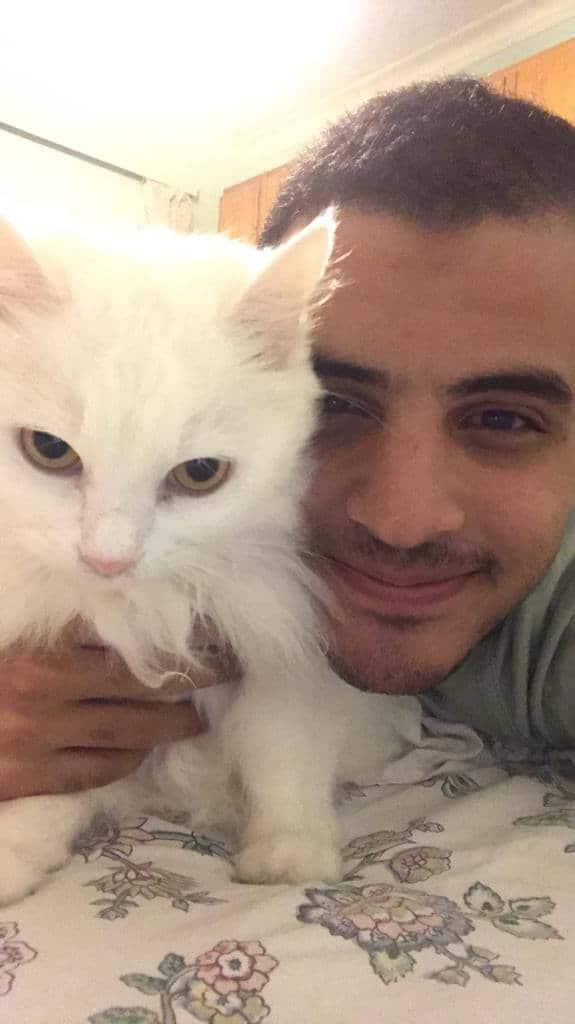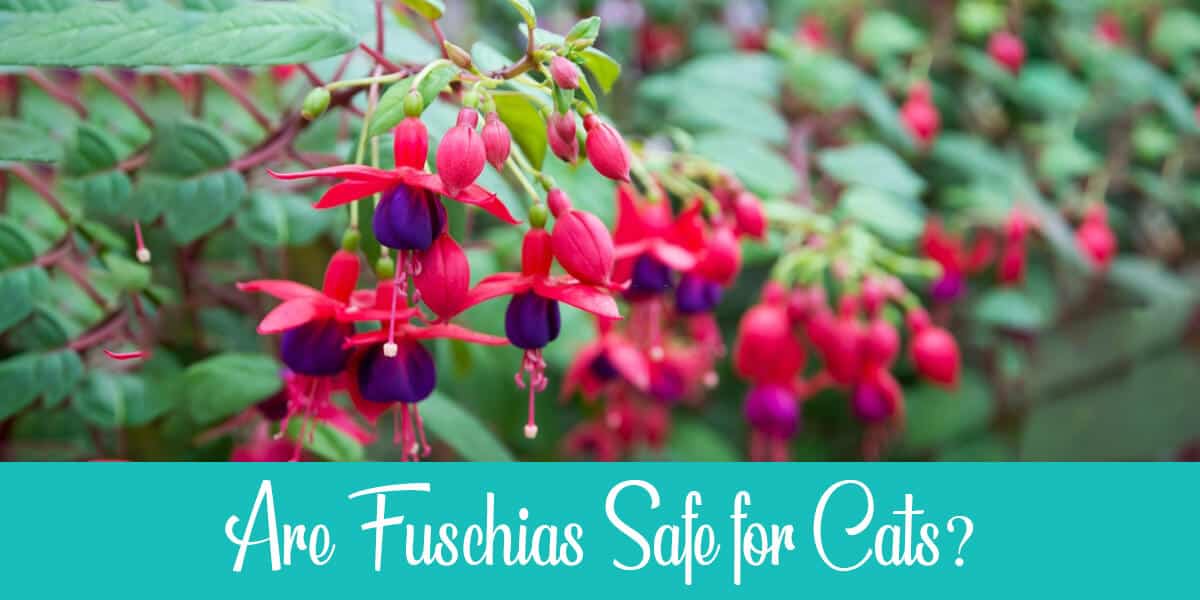If you’re blessed with a green thumb and are an animal whisperer, you’ll want the best of both worlds. Imagine sitting in a perfect Eden, which you’ve worked on and nourished through the seasons, sipping on some tea, and listening to your favorite choice of music.
Your eye catches that lovely assortment of fuchsias and you almost spill your tea. What if that gorgeous bush of fuchsias is poisonous to your pets?
Now, whenever you look at it, instead of admiring its beauty, you start worrying about your pet going near it, or worse, eating it.
As much as you love your garden, you love your pets even more and would never compromise their safety just to make your garden prettier.
That’s why you need to consider whether or not certain plants in your garden can pose a threat. Are fuchsias poisonous to cats? Let’s find out.
Table of Contents
Are Fuchsias Poisonous to Cats?
Thankfully, fuchsias aren’t toxic to cats. Most pets are, in fact, disinterested in the plant and are most likely not going to eat them. However, in the case that they do, they’re absolutely safe and there’s nothing to be worried about. Fuschias are nontoxic to not only most animals, like dogs, cats, and horses, but also to humans. It’s generally safe to have these plants around your house.
Why Would Cats Eat Plants?
You’re probably thinking, “If plants aren’t interesting to cats, why would my cat eat them?” Well, the answer is that there are several potential reasons.
If the cat is young, chances are its curiosity was the reason why it tried out the plant and took a bite off its leaf.
Another reason for a cat to eat a plant is that the cat isn’t feeling well. When a cat feels ill, it will look for something to eat that’ll make it vomit so that it’ll feel better afterward. The cat may also be looking to vomit for attention, but that’s nothing a good hug and cuddle won’t fix.
Cats may be triggered by the plant’s movement if it’s hanging or if it’s swinging about, in which case the cat’s hunting instincts kick in and they try tackling the plant and biting into it.
Another likely reason is if your cat’s on a dry food diet and is looking for some more moisture to digest.
What Happens If My Cat Eats a Bite of a Toxic Plant?
We don’t exactly have our eyes on our cats all the time, so of course, there will be times when we’re occupied with something else.
What are some symptoms you should look out for that could be worrisome about a cat eating something toxic?
Look out for the following:
- Excessive drooling
- Head shaking
- Gasping
- Repeated swallowing
- Depression
What to Do If Your Cat Eats a Toxic Plant?
Seeing the previously mentioned symptoms your pet shows, plus a half-eaten leaf, will let you know that you need to rush your pet to the vet that very instant.
In the unfortunate event of your pet eating a toxic plant (check out the ASPCA website linked), don’t forget to do the following two points before going to the vet:
- Remove any part of the plant that your pet bit from its mouth.
- Take a sample of the plant with you to the vet so that they have a better idea of what to look for and how to treat it.
Related:
– Are Gerberas Poisonous to Cats?
– Are Freesias Toxic to Cats?
What Will the Vet Do?
After you’ve made it to the vet’s, they will most probably do one or all of the following steps to ensure your pet’s safety:
- Decontamination: Induce vomit to clean the digestive tract.
- Diuresis: IV or fluids to help further wash out any remaining toxins.
- Monitoring: They will also be keeping an eye on the pet’s urinalysis and kidney functions to make sure appropriate amounts of fluid are entering and exiting the pet’s system healthily.
How to Avoid Any Plant-Related Accidents
To avoid this potential nightmare altogether, make sure you consider the following notes:
- Research all the types of plants that are pet-friendly and harmless to your pets.
- Have a variety of hanging pots and strategically placed pots that your pets can’t easily be tempted to jump onto or play with.
- Make your plants “smell bad” to avoid any smelly surprises from your cats in your plant pots. Cats are very picky and tend to stay away from highly fragranced plants. To do so, you can:
- Use cayenne pepper around the leaves.
- Put orange or lemon peels in the pots of your houseplants.
- Spray the leaves with diluted lemon juice or orange oil.
- Be careful while shopping for over-the-counter pesticides and insecticides. Make sure to stay away from citrus oil extracts and other chemicals that may harm your pet and plant.
FAQs
What’s the most poisonous flower to cats?
Lilies, including most of their types, are one of the most poisonous flower types for cats. Experts agree that lilies could easily cause acute kidney failure in cats. Daylily, Japanese Show lily, oriental lily, and stargazer lily are some types that you should definitely keep your feline friend away from. Cannabis and Azaleas are also considered deadly flowers for felines.
Are fuchsias poisonous to humans?
Unlike cats, fuchsias are 100% safe for us. Either their flowers or berries, both are edible and they’re perfectly fine for humans.
In Conclusion
Are fuchsias toxic to cats? No, they’re not. No part of that beautiful plant is toxic to cats, dogs, horses, and even humans.
It’s actually one of the top recommended houseplants that are used as an alternative to lilies and other plants that are potentially toxic to pets.
It’s always better to be safe than sorry, especially when it comes to our beloved feline friends, so be sure to research all possible plant options you want for your house and garden, and consider just how pet-friendly they are before you actually buy them.
If you suspect that your cat has eaten a poisoned plant, which will most probably be associated with gasping, head shaking, excessive drooling, repeated swallowing, and depression, you need to rush your pet to the vet.
Lastly, if you have plants in your house or garden that you know for a fact are toxic to cats, be sure to follow the above-listed precautions to prevent potential accidents.

I’ve been living with cats since 2008 and I can confidently say I have more feline friends than humans lol. I currently live with 5 cats in different life stages; two of them are less than one year old, one is 2-ish years old and the oldest two are 9-ish years old. I’ve developed a strong bond with cats over the years and I’m eager to share my experience through this blog. You can learn more about my cats here.

